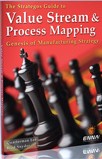|
 In
A Nutshell In
A Nutshell
Summary of the Economic Lot Size model: imperfect but it still has value.
|
Economic Lot Size (ELS) was first developed about 1913. It balances the costs of
inventory against the costs of setup over a range of batch quantities. In this model, the
Economic Lot Size (ELS) is where Total Cost is minimum.
Economic Lot Size (ELS) is dead according to some advocates of Lean Manufacturing and Theory
of Constraints. They contend that every operation should manufacture what the downstream
customer needs immediately in "batches" of one unit. (One
Piece Flow)
 This
may be correct in an ideal world. Most factories are less than ideal.
Where significant setup
costs exist, batch quantity is still an issue and Economic Lot Size provides important insights
for rational decisions. This
may be correct in an ideal world. Most factories are less than ideal.
Where significant setup
costs exist, batch quantity is still an issue and Economic Lot Size provides important insights
for rational decisions.
The figure depicts a typical ELS model. This model calculates the total production cost per
unit over a range of batches. The batch quantity having the lowest unit cost is the ideal or
Economic Lot Size. This Total Cost typically forms a "U" as shown in the figure.
The model classifies total cost into three components: Setup Cost, Direct Cost and Carrying
Cost (Storage Cost). This facilitates calculation and aids understanding.
|
Direct Cost
|

Printing Press Setup
Setup (or make-ready) is critical in the printing
industry.
|
Direct costs are directly proportional to the amount produced. Materials and direct
labor are the most common. Accounting systems usually capture these costs accurately and make
them readily available. In the figure, direct cost per piece is a horizontal line for all batch
quantities.
Setup Cost
Setup costs include the labor and material to ready a machine for production. They may
include the processing of work orders or a first-article inspection. We amortize these costs
over the entire batch to derive the Setup Cost per piece. This cost is
high
when batches are small and rapidly decreases with increasing batch quantity.
Carrying Cost
Carrying or Storage cost is the average cost associated with storing an average production
unit for the average time it will be in inventory. These costs are more difficult to calculate
and we will not take up that procedure here. Storage costs are significant and often represent
20%-60% of inventory value on an annual basis.
Carrying Cost per piece (in the simplest case) varies directly with batch quantity. The
larger the batch, the more units will be in inventory, on average.
There are problems with using ELS as the only determinate. The next page explains how to make
rational batching decisions using ELS as one of several considerations.
|





